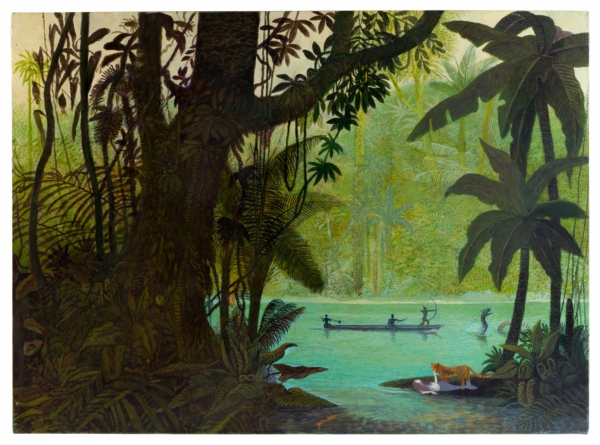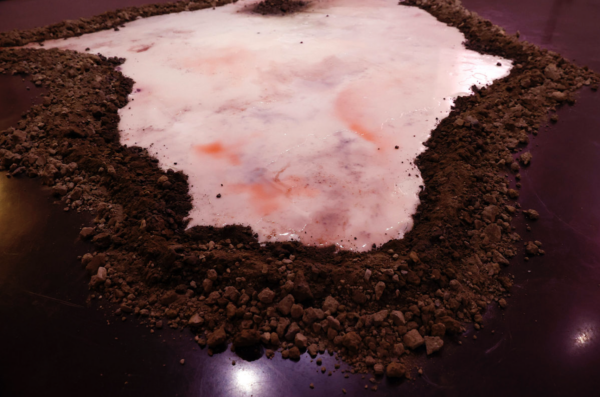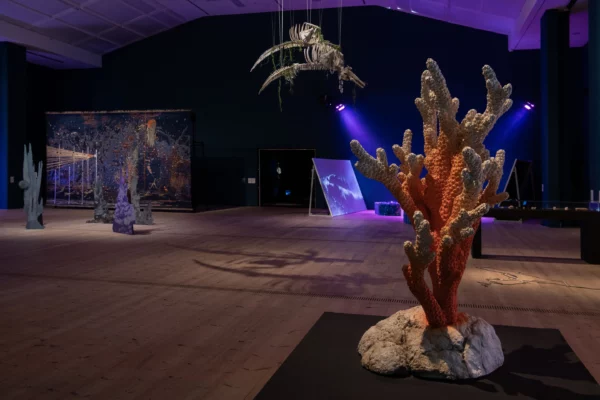
The Earth, the Fire, the Water, and the Winds – CARA
le Center for Art, Research and Alliances (CARA) à New York présente The Earth, the Fire, the Water, and the…

Tue Greenfort VIS VITALIS, Johann König, Berlin, 2014
5 July – 9 August 2014
Opening: 4 July 2014, 6 – 9 pm
Johann König, Berlin is delighted to present new works by Tue Greenfort in this, his fifth solo exhibition at the Gallery. The works of the Danish artist have, from the outset, shown an ongoing critical concern for our perception of Nature and for themes such as ecology and the handling of natural resources. Aesthetically straightforward and clear in their forms, the works often reflect complex contexts and connections, based on extensive research into a specific place, a particular material, a real condition. In the current exhibition, Tue Greenfort is concerned, for example, with the notion of VIS VITALIS, the force from which life emerges, or the force of life. The artist himself characterizes the exhibition in the following words:
It is by re-thinking the notion of ‘the environment’ – that abstract, divisive term with which we have become so familiar, a term whose exhausted meaning and lack of critical depth open up a possibility of re-framing the problem – that we can perhaps achieve a fundamental paradigm shift.
“The world population has more than doubled in the past 50 years. Countries throughout the world are now facing the challenge of an increasing demand for food, at a time when our society has become more environmentally conscious. Today fertilizers are playing a critical role in supporting worldwide food production, but the raw materials being used and their manufacturing processes are having a negative impact on our environment. The challenges facing the fertilizer industry are quite complex. What we are seeing is that the agricultural food production systems will be challenged with an increased demand for food, and at the same time there will be a loss of production acreage to urban and industrial development. So the fertilizer industry must find new process technologies for increasing fertilizer production worldwide and at the same time protecting the environment.” (Terry R. Collins, Ph.D., P.E. CEO/President BioNitrogen Corp.)
If we maintain our belief in the critical potential of art (for example by operating with local initiatives) we can demonstrate both alternatives to, and forms of critical stance against, the omnipresent economic matrices that threaten life-sustaining systems on a global scale.
Particular images insistently recur in our mind’s eye once we have first seen them, be it because of their composition, a certain facial expression, a puzzling quality, sheer brute repetition or through their capacity to disturb and shock. Likewise, the media strategically and intentionally reverse engineer these qualities and their sensory affects to induce pathologies within the viewer.
In spite of these tactics, a kind of manipulation-literacy emerges that is aware, wary and weary of the constructive role of such images.
Economic and political needs shape so-called public opinion, thereby sustaining a power regime, which presumes itself to be a force for growth but whose primary agenda it is to keep on accumulating material wealth.
Over the past decade, I have sporadically collected newspaper clippings relating to such specific thematic concerns, clippings from which a multitude of tangents reach out, marking out many of the major ecological crises we are faced with in our age.
Some of these themes are profoundly interrelated with conceptions and visions that have crystallized out of pre-enlightenment beliefs and reveal a fascination with ideas and explanatory models circling around life and the life force itself – the doctrine, also known as ‘vitalism’, that there exists a certain force constituting life itself, a force that cannot be made or copied, a vis vitalis. Such superstitious notions became less prevalent following the emergence of the mechanistic Cartesian Weltanschauung, which became a dominant doctrine or modus operandi and, in the name of Reason, closed off the apertures of obscurantist beliefs and animalistic narratives so vital as explanatory models in earlier society.
This overall focus and a range of system studies and resultant productions have led to the related considerations and formations that now constitute the current exhibition. The exhibition, the studies and the ways of thinking are, as it were, enmeshed.
Tue Greenfort (b. 1973 in Holbæk (Denmark) lives and works in Denmark and Berlin. He Studied at Staatliche Hochschule für Bildende Künste (Städelschule), Frankfurt am Main with Prof. Thomas Bayrle and at Academy of Fünen, Denmark with Prof. Jesper Christiansen and Prof Lars Bent Petersen. Until August 2014 his works are on display in his first Danish solo exhibition BUTTERLAND. Art, ecology and other scales in SORØ KUNSTMUSEUM. Further solo exhibitions were shown at Kunstraum Dornbirn, Austria (2012), Feeder Canal, Bristol (2012), South London Gallery, London (2011). In Germany his public art work NEOBIOTA is still on view at KVB Nord-Süd Stadtbahn, Underground Station Breslauer Platz, Cologne. In 2012 he recieved the GASAG Art Prize which included a solo exhibition at Berlinische Galerie, Berlin. At dOCUMENTA (13)he presented his The Worldly House: An Archive Inspired by Donna Haraway’s Writings on Multispecies Co-Evolution.
More informations
le Center for Art, Research and Alliances (CARA) à New York présente The Earth, the Fire, the Water, and the…
élébrant dix ans d’une collaboration fructueuse avec le Musée de la Chasse et de la Nature, COAL, acteur pionnier et…
L’exposition For All At Last Return, au Baltic Centre for Contemporary Art, réunit un ensemble majeur d’artistes internationaux autour d’une…


